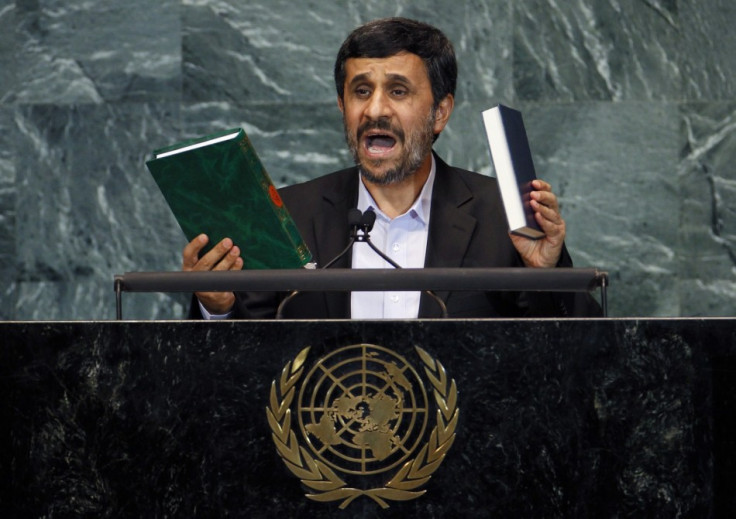Iran Sanctions: A Timeline of Western Economic Pressure

1979
Iran is first hit by US sanctions after students storm the US embassy in Tehran and take 52 diplomats and staff captive. The US freezes $12bn in Iranian assets and bans Iranian imports, with the exception of small gifts, informative literature, foodstuffs and certain kinds of carpets. The hostage crisis lasts 444 days.
1995
President Bill Clinton bans US companies from investing in Iran. Two months later, he stops them from trading with the country in response to its escalating nuclear programme.
1996
The US passes a law allowing it to sanction any foreign firm that invests more than $20m a year in Iran's energy sector.
2006
The UN Security Council sanctions Iran after President Mahmoud Ahmadinejad fails to halt uranium enrichment. Ahmadinejad had restarted the enrichment programme, which had been stalled in 2002. The sanctions outlaw trade in nuclear-related technology and materials and target individuals in the nuclear sector.
2007
The UN Security Council extends sanctions to cover all arms exports, while the EU sanctions Iranian individuals.
The US introduces its toughest raft of sanctions for what it claims to be Iran's support of terrorists. Those organisations connected with the Revolutionary Guard are banned from using the US financial system, as are three Iranian banks.
2010
Iran is forbidden from buying heavy weapons by the UN Security Council. The US targets Tehran's energy and banking sector, with companies penalised for supplying Iran with refined petroleum products.
The EU bans joint ventures with Iranian energy companies along with the trade of arms equipment that could be used in nuclear activities. It also sanctions trade in natural gas technology.
2011
The UK and Canada join the EU in issuing fresh sanctions. The UK stops all of its financial institutions from doing business with Iranian banks, while the US and Canada issue sanctions on companies deemed to be trading with Iran's energy industry.
2012
Tension grows as Iran threatens to close the Strait of Hormuz, a vital trade route for oil, in response to US sanctions on its central bank. The EU issues an oil embargo.
Through the summer, the EU bans all Iranian oil exports from its markets and the US bans banks around the world from transacting with Iranian oil companies.
As sanctions begin to bite, the Iranian rial loses 80% of its value against the dollar. The EU compounds the issue by outlawing any transactions with Iranian financial institutions and slapping an embargo on its natural gas.
In Iran, riot police attack 100 currency traders outside its central bank.
2013
Iran informs the International Atomic Energy Agency that it is to upgrade its uranium enrichment programme in January. Three months later, it starts operating two new uranium mines.
The general election in June places reformist candidate Hassan Rouhani in the presidential hot seat. His election is welcomed by the West, where he is viewed as more progressive and less belligerent than Ahmadinejad.
In November, Iran agrees to curb enrichment of uranium above 5% and to allow UN inspectors access to its facilities. In return, it receives $7bn in sanctions relief from the US, UK, Russia, China, France and Germany.
2014
Negotiations continue as both sides try to reach a permanent agreement. In May, the House of Lords' sub-committee C on external affairs meets to discuss the EU's interim agreement with Iran.
© Copyright IBTimes 2025. All rights reserved.






















